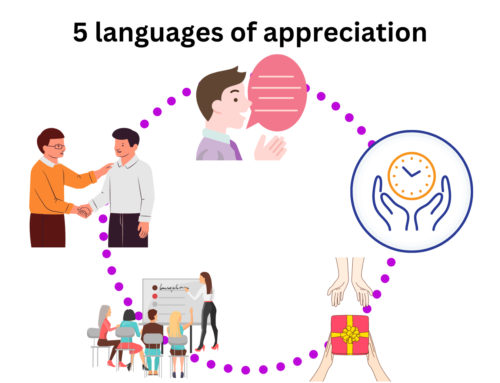We are going through difficult times because of coronavirus restrictions, quarantine, lockdown… We often need to find new ways and reinvent our businesses. We are forced to work from home, use technology that we have never used before, teach online, use platforms such as google class, record videos, write articles. We need to change our leadership style. We need to homeschool our kids. We need to be more patient and tolerant. We are facing so many challenges right now. So many things are new to us.
leadership style. We need to homeschool our kids. We need to be more patient and tolerant. We are facing so many challenges right now. So many things are new to us.
What certainly pops up in our heads a lot in these moments is: “I CAN’T DO IT!” (I am not good at writing or speaking in front of a camera. I am not a teacher. I can’t lead people remotely….)
How can we change our mindset from I CAN’T do it to I CAN do it?
Professor Carol Dweck defined two types of mindset: fixed mindset and growth mindset.
When we are in a fixed mindset, we believe that our basic qualities such as intelligence or talent are fixed traits. I am good or bad at something because that’s just who I am. I was born this way. This leads to giving up when something gets a bit hard.
On the other hand, in growth mindset we believe that our most basic abilities can be developed through dedication and hard work, brain and talent is just the starting point. If I work hard, I will be good at anything I set my heart to. This point of view creates resilience and love of learning and these are essential ingredients for great accomplishments.
What can you do?
1. Become aware of your mindset
You might have a growth mindset at home but fixed mindset at work. We are all a mix of growth and fixed mindset. Become aware of your mindset in a particular situation. If you are not aware of it, you can’t make a change because you don’t even know there is something to be changed. How can you become aware? Learn to listen to your inner voice. If you say “I can’t do it, “ “I am not good enough,” “I am not a good writer,” “I wasn’t born to be a leader,” “I am stupid” you are in a fixed mindset. Ok, now you are aware of being in a fixed mindset and can change that to a growth mindset.
2. Change your inner voice to: NOT YET
Engage in a self-talk. Begin to question your fixed mindset voice. Change your inner voice into growth mindset voice using “not yet”. When you hear your inner voice saying: “I can’t do it.” change it into “I can’t do it yet.” Instead of “I am stupid.”, tell yourself “I haven’t learned it yet.” Whenever your fixed mindset starts to put you down, answer using NOT YET. It’s like a constant talk between a devil who doesn’t want to see you succeed and an angel who believes in you and knows that you can do it. With time and practice the devil voice will become weaker and weaker.
3. Remember something you thought you would never achieve and then you did
When I have a doubt if I can do something and my inner voice kicks in. “I will never learn to speak in public.” My mom always reminds me: “When you were a child you used to say: ‘Mommy, I will never learn to read.’ Can you read now?” And I answer: “yes I can and in many languages”. My mom: “You see!” Remind yourself of past challenges that you overcame successfully. Be concrete! This with shut the devil’s mouth and boost your confidence.
4. Take growth mindset actions
Now when your inner voice isn’t hindering you anymore. Take growth mindset actions. One step at a time. ask yourself questions such as: What new skills do I need? What can I do to become better? How can I do this? If your desire is to write a book, start a small blog, write one post every week, share it with your friends, ask for feedback, watch you tube videos about creative writing, read books. If you get stressed at home and create fights, learn how to increase your resilience and self-control. If you want to create a you tube channel, take your camera and start practicing. Record a video, watch yourself, change the lights, change your way of talking. Whatever your obstacles are do something, anything that will bring you closer to your goal! One step is better than no step. As Lao Tzu said: “A journey of a thousand miles begins with a single step.”
5. Praise yourself and others for progress
Praise yourself for any progress that you have done. Growth mindset focuses and praises progress not just the final result. Praising progress is important to stimulate the love and importance of learning. Are you writing a book, praise yourself for writing one page. Would you like to be calmer and more loving husband? Praise yourself for learning to be more resilient to stress and not exploding for one day, one week etc. Praise your kids for the effort that they are giving into learning at school. Focus on the process and improvement not just the results.
6. Be patient and determined
Thinking in fixed mindset is very easy because if when something gets difficult, we give up and that’s it. Thinking in growth mindset we need to be patient. Learning and developing new skills and abilities needs time, it doesn’t happen overnight. We might try and fail many times before we succeed. When you fail, learn from your mistake and keep trying. After failing our inner voice will begin disturb us again: “You are a looser, I told you so.” Just kindly respond “Game isn’t over yet. I will get there.” Thomas Edison tested 3000 light bulbs made of many different materials before he succeeded.
Working from your growth mindset is an ability that you can learn. There are many more ways how to achieve that. What you need to do is practice your awareness and change your way of thinking. If you are looking for information or more individual help, don’t hesitate to contact us and schedule a one by one coaching sessions here.
Now, I would like to invite you to watch this amazing talk by Carol Dweck where she talks about the scientifically proven benefits of growth mindset:
Author: Pavla Belostikova, Master of Human Decision Science




